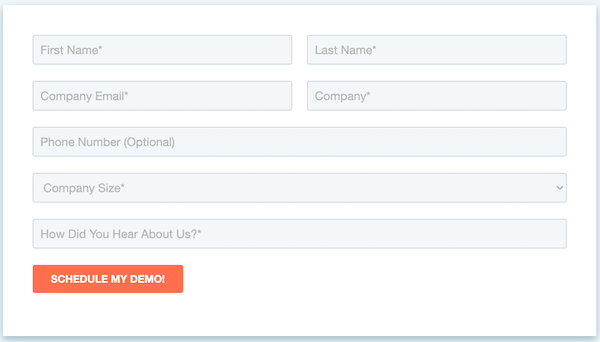Whether you’re a marketer or social media expert — or even if you’re just a social media-savvy executive — you’ve probably come across the term dark social lately.
Many marketers, thought leaders, and general audiences are intrigued by this concept more than ever before.
Why’s that?
Well, buyers — especially in B2B — consume and learn about products/services in so many different ways. Plus, there are various new channels where people obtain information, and effective marketers need to be active participants within these.
It may come as a surprise though to learn that the idea of dark social has actually been around for years. The term seemingly first hit the world in 2012 when Alexis C. Madrigal used it in this piece for The Atlantic.
Today, there are way more people talking about dark social and sharing why it matters. So what exactly is dark social? Why does it matter? And how can you measure it?
Definition of Dark Social
Dark social is a simple term used by marketers to describe the web traffic that comes from popular modern distribution channels when it’s difficult to accurately track. These are places where B2B buyers are highly active, but the company will not have direct visibility of the impact.
Other similar terms you may hear to describe this phenomenon are dark traffic, dark social media, or dark funnel. All of these are describing very similar things. However, note that the dark funnel is all about the intent data not the specific channels.
Dark social examples
Now that you know the definition of dark social, you’re probably wondering what channels can be considered “dark,” where direct attribution becomes more challenging.
Here is a list of dark social examples to keep in mind:
- Social Networks (LinkedIn, Twitter, Instagram, etc.)
- Content Platforms (Youtube, Apple Podcasts, etc.)
- Groups & Communities (Slack Communities, Facebook Groups, etc.)
- Employee Communications (Zoom, Slack Channels, etc.)
- Word of Mouth (Texts, Calls, in-person convos, DMs, etc.)
- Events & Meetups (Virtual events, In-Person Meetups, etc.)
- Messaging Apps (What’s App, Facebook Messenger, etc.)
Why Does Dark Social Matter So Much?
If you paid attention to the examples of places where dark social happens, then you may already realize why it matters for your brand.
In fact, 84% of consumers’ outbound sharing from publishers’ and marketers’ websites now takes place via private, dark social channels such as email, social networks, and instant messaging.
Since that report came out, the channels where dark social happens have continued to expand and become more relevant than ever.
These are all places marketers and organizations NEED to be active participants in to reach their ideal customer profiles (ICPs) today, especially in B2B.
Why? Because it’s how buying decisions happen. It’s how you create demand for your product or services. It’s where buyers go to learn and discover with industry peers.
Something our team at EveryoneSocial has been shouting from the rooftops for years is relevant here: people trust people. Meaning, the way people consume and buy is through their peers’ recommendations and influence.
Sure, search engines like Google, review sites like G2, and research vendors like Forrester or Gartner still carry some influence — but not as much as people tend to think.
Social Networks and Dark Social
Before we move on, I want to spend some time on social networks a bit. You probably thought, “But wait, social media channels are measurable in our attribution software.”
You’re correct — but not entirely. This is one of those examples that actually has both components to it. Let me explain below.
For example, if you share a company blog post to LinkedIn and someone clicks, that can be attributed to your analytics and CRM with UTM tracking. Easy and obvious, right?
But, what if you share text-based content with no links? How about native videos? Maybe a static image or GIF? What if someone copied a link and pasted it into a different dark social channel, changing the impact of those UTMs?
In these examples, the content can educate or entertain your audience and influence them to take action at a later time.
Let’s say that after seeing some social posts,someone from your network is influenced to visit your company website directly and signs up for a demo of your company product.
Your attribution software will show that lead came from direct traffic, with nothing more noted. However, even though this person typed your URL directly into the browser, the actual influence was from the great social content you posted.
The same thing could happen if they type your company into Google and convert organically or off a paid search ad. Attribution software tells you it came from organic or paid search, but fails to recognize it’s your social posts that are so influential and that this is where you need to focus more of your efforts.
Employee Advocacy and Dark Social
Another powerful medium for dark social influence is utilizing an employee advocacy strategy or encouraging employees to create and share content to their personal networks.
Again, this has both direct and indirect influence – which can’t always be measured. When employees share links to the company website, your advocacy platform and UTMs will give you insights into the ROI generated directly.
However, you don’t want an army of employees always blasting company links or company blog post links. Audiences expect more from a brand, so your distribution strategy will include all types of content mediums and even third-party content.
This won’t be entirely directly measurable, but it creates demand and word-of-mouth influence that generates massive brand awareness, increases inbound opportunities, shortens sales cycles, and much more.
I recently covered how to measure the impact of your employee advocacy program, which touches on the dark social influence, if you’re interested in learning more.
How Do I Track and Measure Dark Social?
So the million-dollar question may have crossed your mind after reading all this cool information about dark social: how do I measure the results?
More than likely, you need to prove the results of these channels in some way to a manager, executive leadership, or a board member.
That’s a fair request, but it’s important to note that not every marketing tactic needs or can be 100% accurately measured. Social networks are limited in what they can legally share for privacy reasons.
But there are a few ways to dive into the data and start to piece some things together.
Google Analytics
One place you can start is with Google Analytics. Most businesses use this platform, although others do exist and you might be able to mimic this in some way.
What you can do in your Google Analytics account is create an advanced segment, which separates overall visitors from direct traffic and excludes specific pages.
Direct traffic is typically where most of your dark social traffic is recorded, but it’s also where people can type URLs directly or even bookmark a page. So when you set up filters, it’s important to exclude some of the easy and standard URLs someone may type in directly.
Segment Setup
In Google Analytics go to Audience → Overview → + Add Segment and click on ‘+ New Segment’.
Name what you’d like your segment to be called. Then, under “Advanced” in the left-side column, you’ll see conditions.
This is where you’ll exclude pages that can be easily typed into a browser or may even be bookmarked. These would be pages like resources, blog, demo, contact, etc. It’s up to you what you think these pages would most likely be
Here is our own segment in Google Analytics.

You’ll also want to exclude returning visitors under “User Type” because while it’s unlikely they’ll type in the URL themselves, they could still be referred back there by another user.
What you specifically want to include in your segment is based on your best judgement. You may also need to test a few times and see what web pages make sense for you as there is no exact science to this. In my example above, I include our homepage which is marked as “/” within the segment.
Once your setup is done, you can use this segment to see some sources of dark social. By no means is this a perfect remedy, but you’ll be able to gain some insights.
“How Did You Hear About Us?”
If you’re super active in the dark social examples from above or are just planning to do so, there’s another relatively easy way to get accurate information about their impact.
On your company website where you have forms related to demo, pricing, or contact you can add a simple required text field on your form that says, “How Did You Hear About Us?”
Here’s an example of what that can look like on your form:

Why should you add this form?
As you learned above, the information in your attribution software may show you that the majority of your demos come from your organic channel like Google, for example. However, the real impact on that person’s decision may actually have been your podcast.
You’d never know that without asking on the form.
Certainly, you could ask them during the call or via email, but when someone is filling out this form they’re more primed to answer and you ensure this data is captured in case you don’t get ahold of them via phone or email.
Now you’re starting to get an accurate picture of which channels have the most impact on demos or closed-won deals. You may be surprised to learn where many come from and how different that’s displayed in HubSpot or another tracking software, for example.
Potential Dark Social Pushback
Sometimes the above data is just not enough to convince your managers, leadership, or board. Even though adding that form field, for example, can be a huge eye-opener, you’ll still have stubborn skeptics.
Unfortunately, you’re very likely to face resistance if your company is very hardcore about every little data piece and/or it’s stuck in traditional marketing mindsets where marketing qualified leads are a top indicator of success to them.
However, if you’re already highly active in dark social channels and your supervisor requires more convincing, suggest turning all those channels off for a month or so to see what changes.
Otherwise, if dark social is meaningful to you but you have no support for it at your organization, you should consider moving on to a company that does get it. I think the below statement from Dave Gerhardt is immensely important to remember today.

















